

If the oil filter holder bolt [A] was removed, tighten it.
Apply a non-permanent locking agent to the threads of the oil filter holder bolt.
Torque - Oil Filter Holder Bolt: 35 N·m (3.6 kgf·m, 26 ft·lb)
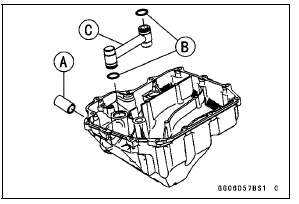

Blow away the particles by applying compressed air [B] from the inside to the outside (from the clean side to the dirty side).
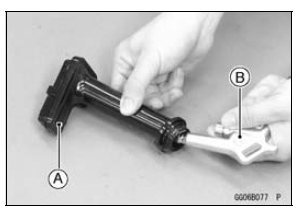
| WARNING Gasoline and low flash-point solvents can be flammable and/or explosive and cause severe burns. Clean the screen in a well-ventilated area, and take care that there are no sparks or flame anywhere near the working area; this includes any appliance with a pilot light. Do not use gasoline or a low flash-point solvent to clean the screen. |
NOTE
While cleaning the oil screen, check for any metal particles that might indicate internal engine damage.
If the screen is damaged, replace it.
Face the flanged side [B] to the bottom.
Lower Crankcase [C]
Face the knob of the clamp [F] inward as shown in the figure.
Viewed from Bottom [G]
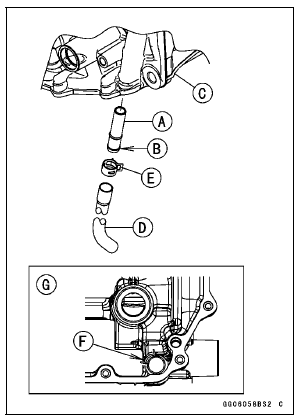
Turn the chamfered side [C] downward.
Fit the claws [E] to the crankcase rib [F].
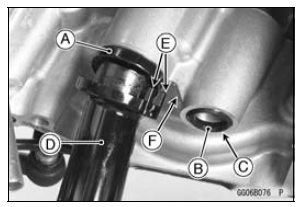
Torque - Oil Pan Bolts: 9.8 N·m (1.0 kgf·m, 87 in·lb)
Front [D]
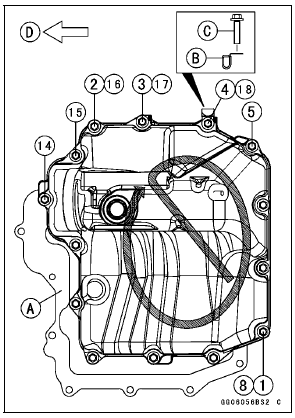
 Oil Pan Removal
Oil Pan RemovalMain Throttle Sensor Output Voltage Inspection
Measure the output voltage at the main throttle sensor in
the same way as input voltage inspection, note the following.
Disconnect the main throttle sensor connector and connect
the setting adapter [A] between these connectors.
Special Tool - Throttle Sensor Setting Adapter: 57001
-15 ...
General Lubrication
Lubricate the points shown below,
with either motor oil or regular grease,
in accordance with the Periodic Maintenance
Chart or whenever the vehicle
has been operated under wet or rainy
conditions.
Before lubricating each part, clean off
any rusty spots with rust remover and
wipe off any g ...
Front Footpeg Position
The right and left front footpegs can
be selected to one of two positions to
suit the front preferences. Have the
front footpeg positions changed by an
authorized Kawasaki dealer.
A. Bolts
B. Upper Position (Standard)
C. Lower Position
NOTE
Install the front footpegs with same
heig ...